8/16/2025

AB
What is Operational Intelligence (OI)? Complete 2025 Overview
Discover what is operational intelligence - Learn how it bridges the gap between data and decisions, empowering your business to thrive in a fast-paced world.
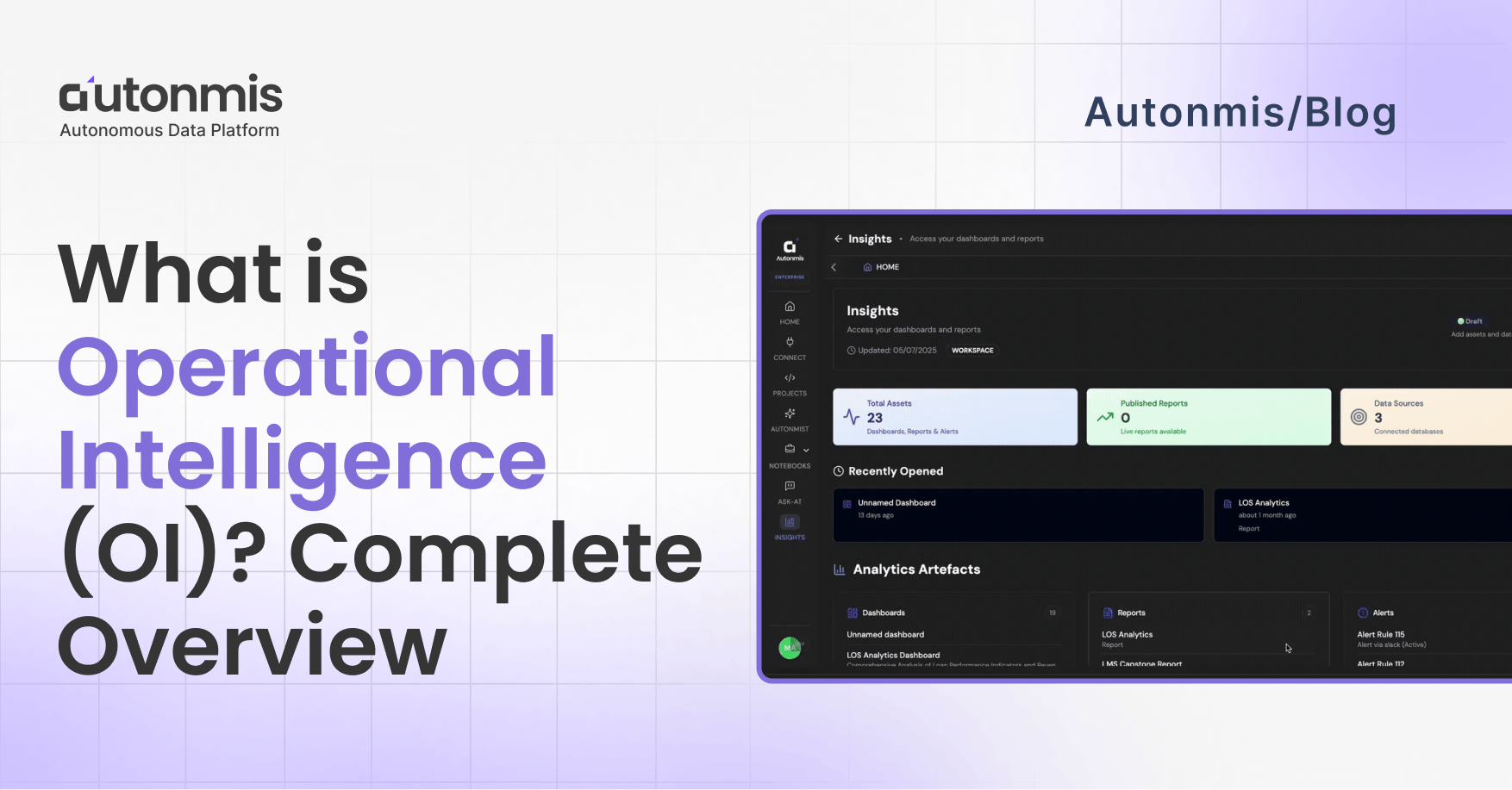
Introduction: Why Operational Intelligence Matters Now
What is Operational Intelligence (OI)? It’s no longer a “nice-to-have.” In 2025, it has become a strategic necessity.
Enterprises, startups, and even mid-size teams are facing the same challenge:
- Too many tools.
- Too much fragmented data.
- Too little real-time, actionable context.
We’ve all seen the same story play out: dashboards lagging behind reality, incidents discovered on WhatsApp before in the monitoring console, or decisions made off stale reports. That’s exactly where Operational Intelligence (OI) comes in.
Leaders who truly understand the importance of Operational Intelligence know it creates a direct path from signal to decision, reducing the gap between insight and action.
What is Operational Intelligence? Exactly.
At its core, Operational Intelligence for business is about turning real-time operational data into real-time operational decisions.
Think of it as the difference between:
- Business Intelligence (BI): Looking in the rear-view mirror. Reports, trends, historical analysis.
- Operational Intelligence (OI): Looking out the windshield. Current state, anomalies, and the “what now” decisions.
Instead of waiting for end-of-day summaries, OI surfaces insights as soon as data arrives - whether that’s:
- A sudden spike in failed transactions,
- A delay in your loan approval pipeline, or
- A campaign underperforming in one region.
For many organizations, adopting OI is the only way to scale intelligent business operations that match today’s speed of change.

Checkout: What Is an Operations Intelligence Layer? A Better Alternative to Dashboards
Why Traditional Dashboards Aren’t Enough
Competitor blogs (AWS, Sumo Logic, Splunk) all highlight real-time monitoring. But the reality in 2025 is more nuanced:
- Dashboards are passive. They tell you what’s happening but don’t guide you on what to do next.
- Too much noise. Alerts fire constantly, many of them irrelevant. Leaders ignore them until it’s too late.
- Fragmented context. Ops data lives in different tools - CRM, finance, product analytics, marketing. No single control surface exists.
This is why many teams feel they’re “monitoring more, but knowing less.”
This is also why many leaders are rethinking their approach and asking not just “What is Operational Intelligence?” but also “How can we make it part of our everyday operating model?”
Key Components of Operational Intelligence
Here’s what modern OI really looks like - going beyond the generic definitions:
- Data Ingestion Across Business Ops
Pulls from SaaS apps (Salesforce, HubSpot, Stripe), product databases, supply chain logs.
Supports both structured data (SQL, APIs) and semi-structured sources. - Real-Time & Near-Time Pipelines
Streaming where needed (e.g., fraud detection), batch where acceptable (e.g., daily revenue ops).
Flexible enough to balance latency with cost. - Operational Dashboards → But Live Apps
Not just static KPIs.
Interactive control towers for business units (Sales, Marketing, Loan Ops).
Embedded logic: “If X happens, show Y next action.” - Rule-Based Alerts + AI-Powered Triage
Instead of noisy alerts, systems filter and explain what actually matters.
Example: “Conversion rate dropped 15% in NCR due to failed OTPs” - not just “Conversion down.” - Embedded Analytics Workflows
Integrated analysis (SQL/Python notebooks, charts, KPIs) directly tied to operations.
Teams move from insight → action without switching tools. - AI Copilot for Ops
Context-aware assistant that can:
Generate queries on the fly.
Summarize anomalies.
Recommend remediation paths.
When implemented properly, these elements demonstrate the benefits of Operational Intelligence: faster reactions, fewer blind spots, and a culture of proactive decision-making.
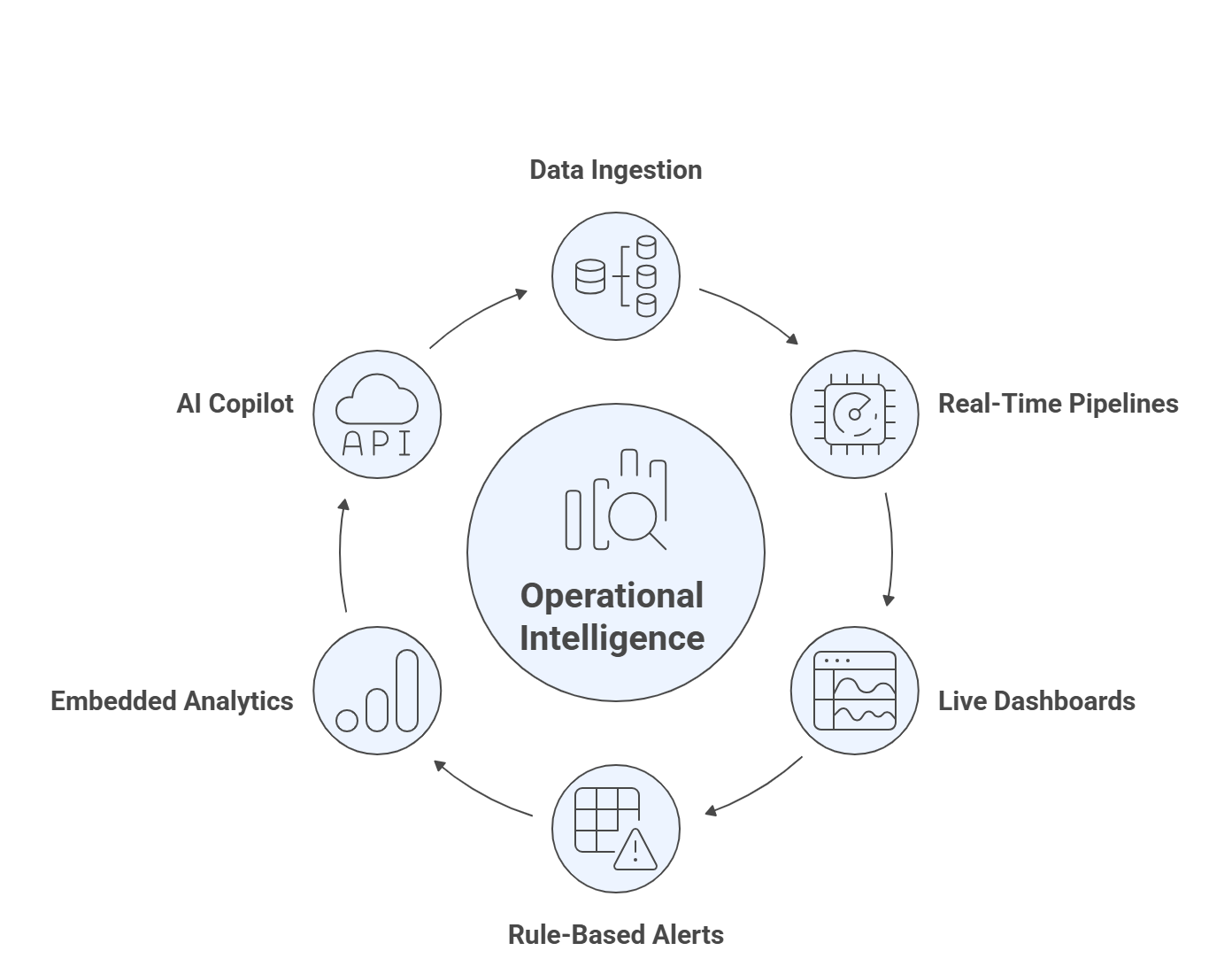
Checkout: How Predictive Analytics Improves Operational Efficiency
Operational Intelligence vs Business Intelligence
Operational Intelligence is often confused with Business Intelligence, but they serve very different purposes.
Business Intelligence is built around historical reporting - quarterly sales reviews, monthly revenue dashboards, and strategic decision-making. It answers the question: “What happened?”
Operational Intelligence, on the other hand, is about real-time execution. It’s designed for ops managers, product leaders, and frontline teams who need to know “What’s happening now, and what should we do?”
If you’d like a deeper dive into the differences, we’ve covered it in detail in our Operational Intelligence vs Business Intelligence blog.
Use Cases
- Loan Operations
Monitor funnel health, detect bottlenecks (region-wise TAT), auto-alert if applications stall. - Supply Chain
Track lane-wise delays, trigger stock alerts, escalate to managers when thresholds breach. - Marketing Ops
Compare campaign ROI vs targets in real time, stop spend on underperforming channels. - Sales Ops
Daily quota progress, team leaderboard, automated nudges when pipeline dries up.
These are no longer aspirational, they’re becoming standard expectations for intelligent business operations across industries.
Why Most OI Initiatives Fail
Looking at older OI narratives (AWS, Splunk, Sumo Logic), many companies still stumble because:
- Tooling sprawl. Each team builds their own dashboards, but context is missing.
- Dependency on data teams. Every small change requires SQL requests. Too slow.
- Reactive, not proactive. Alerts are seen as noise rather than decision enablers.
- No operational follow-through. Insights don’t flow into daily execution.
This is why leaders must stay focused on the benefits of Operational Intelligence, not just implementing tools, but embedding OI into workflows that matter.
The Next Evolution: From Dashboards to Live Ops Portals
The real leap forward in 2025 is shifting from dashboards → live apps for operations.
Instead of static views, imagine:
- Your Loan Ops Control Room updates in real time.
- Your Supply Chain Command Center shows delays and automatically flags escalations.
- Your Marketing Control Tower suggests which campaigns to cut before money burns.
This is the new face of Intelligent Business Operations - not just observing, but orchestrating ops in real time.
Implementation Playbook
If you’re leading a team and want to invest in OI, here’s a practical path:
- Start with one business unit. Pick a high-impact area (sales, supply chain, loan ops).
- Define live metrics. Not just KPIs, but thresholds and triggers that matter.
- Integrate data pipelines. Structured + semi-structured sources, batch + real-time.
- Create control towers. Dashboards that are interactive, filterable, and embedded with logic.
- Layer in automation. Alerts, scheduled reports, Slack/Email push.
- Bring AI copilots in. To reduce dependency on SQL and speed up decision-making.
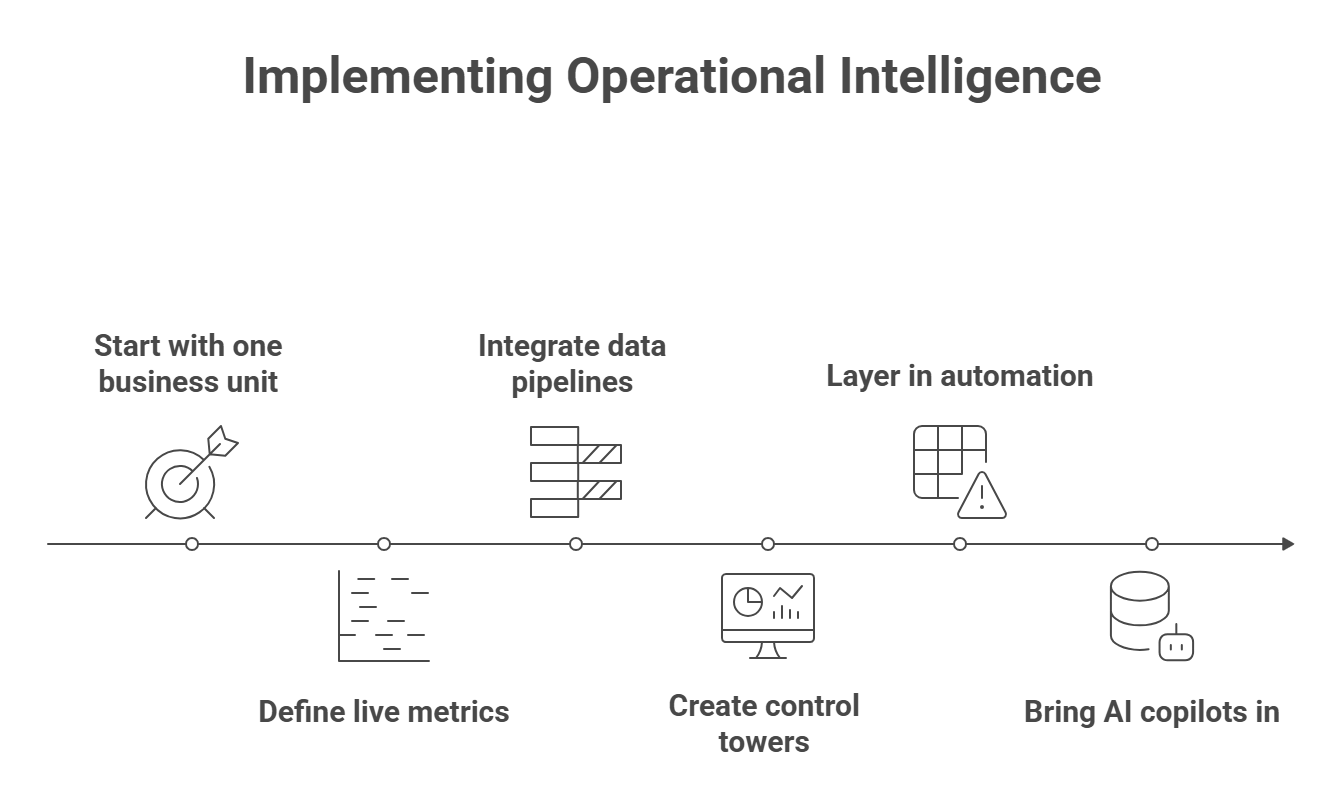
Checkout: What Is an Operational Data Platform? Complete Guide
Autonmis: A Data-Native Operational Intelligence Platform
OI isn’t just about seeing what’s happening - it’s about building a control layer that teams can actually use. This is where Autonmis comes in.
Autonmis is designed as a data-native Operational Intelligence platform. It unifies data pipelines, live dashboards, notebooks, automation, and AI copilots into a single surface where business and ops teams can:
- Observe their operations in real time.
- Act on bottlenecks or anomalies.
- Automate reports and alerts.
- Ask natural-language questions and get actionable outputs instantly.
The benefits of Operational Intelligence here are tangible: less dependency on data teams, faster decisions, and tighter alignment between data and daily execution.
Whether it’s a supply chain command center, a sales leaderboard, or a loan application monitor, Autonmis gives business teams the ability to build and run their own live ops portals, without waiting on a data team.
For leaders, this means OI is no longer a distant goal - it’s a daily reality, available now.
Conclusion: Why OI Will Define the Next Decade of Ops
Operational Intelligence is not another buzzword. It is how teams will close the gap between data awareness and operational action.
Competitors framed OI as dashboards and monitoring. But in 2025, the leaders are moving to:
- Live operational portals instead of passive dashboards.
- AI copilots instead of noisy alerts.
- Embedded workflows instead of siloed analysis.
If Business Intelligence was the age of reports, Operational Intelligence is the age of real-time orchestration.
And the teams that adopt it now will outpace the ones still stuck refreshing dashboards.
Recommended Learning Articles
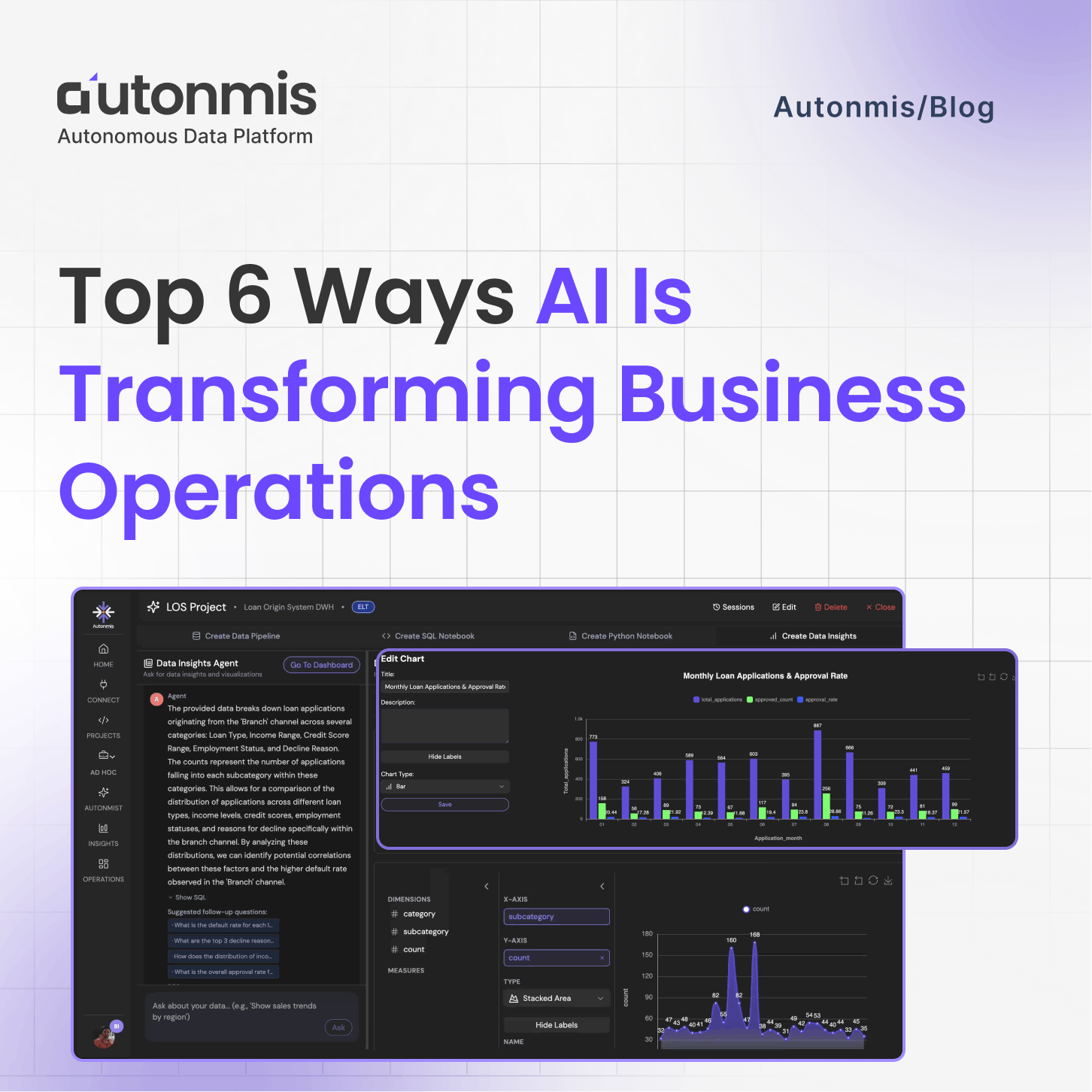
10/23/2025
Top 6 Ways AI Is Transforming Business Operations
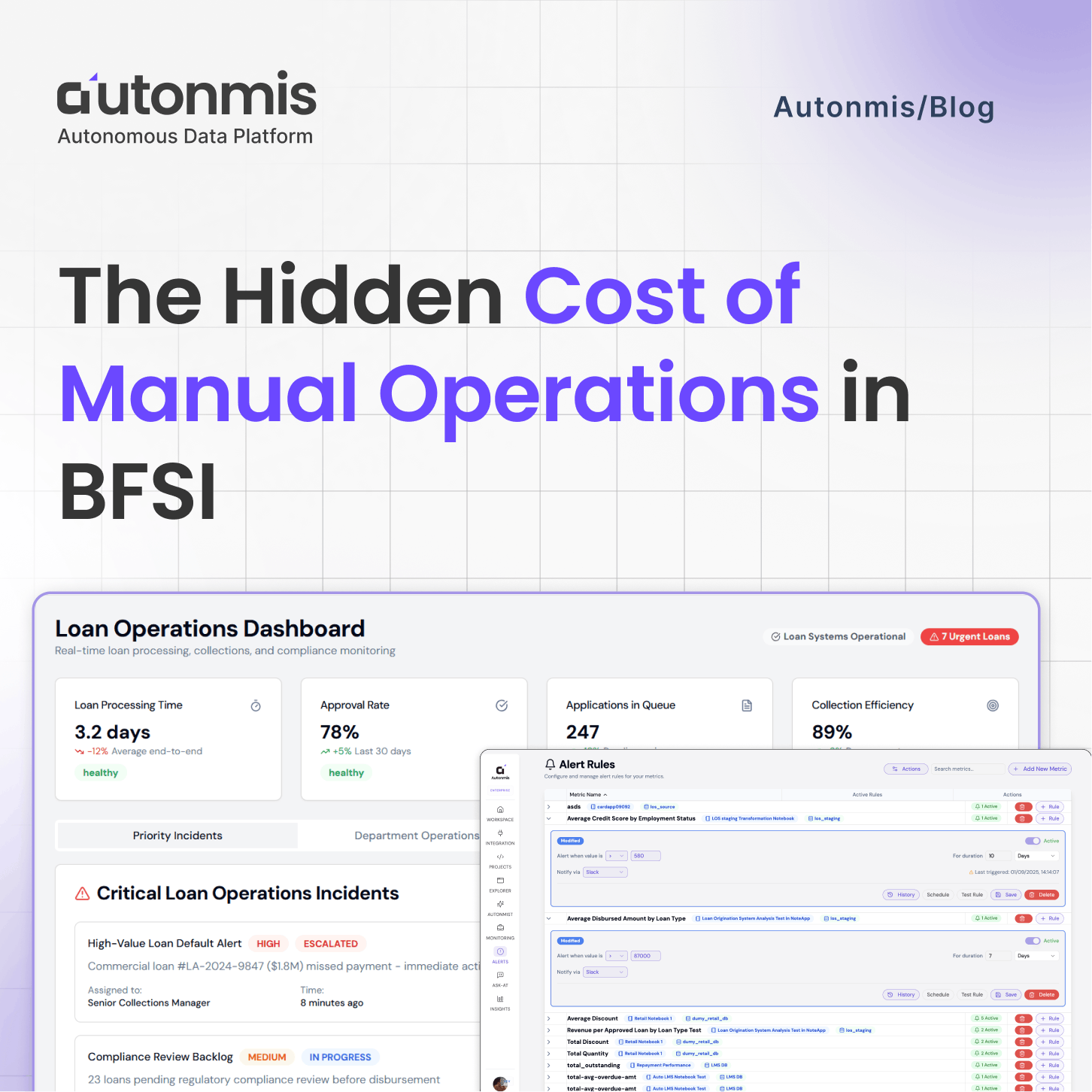
9/22/2025

AB
The Hidden Cost of Manual Operations in BFSI
Actionable Operational Excellence
Autonmis helps modern teams own their entire operations and data workflow — fast, simple, and cost-effective.